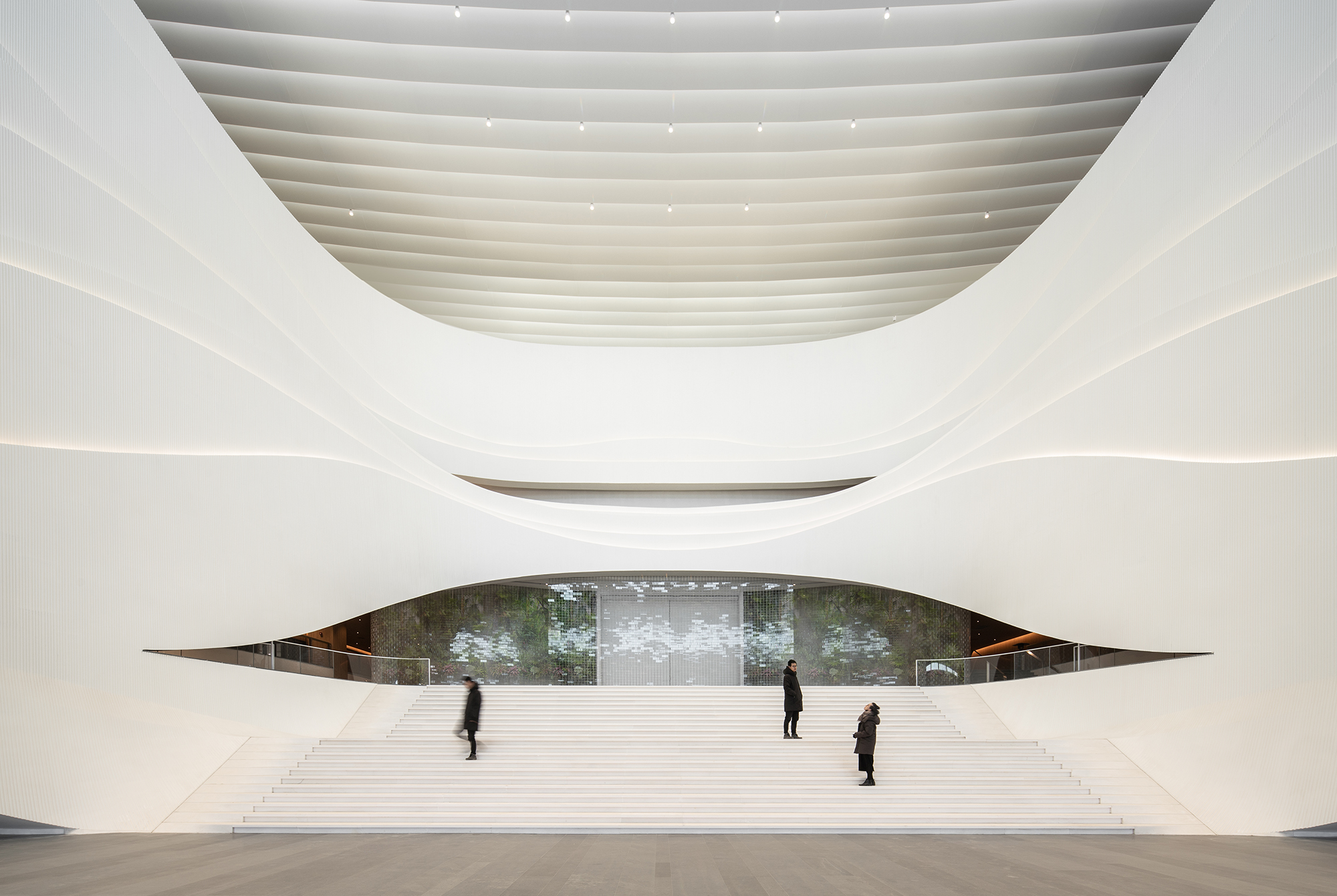

Location: Langfang, P.R.China
Type: Mixed-use Cultural Project
Time: 2018 in construction
Building Area: 13,000 sqm
Building Height: 15.9 m
Team: Zheng Tao, Fernie Lai, Wang Tao, Mark Wang, Melody Hwang, Li Jia Xin, Yu SiDa, Fan Wei
Collaborator: Shenzhen Z&F Culture Construction CO., LTD
Collaborator: Liu Zhuan, Yu XiaoLi, Li XueJing, Wei DongZe, Chu TianHang, Fan KaiFeng
Consultant: Structural Re-Design: Xu Yu Xiang
Consultant: Lighting Design: Zhu Ge
Consultant: Contractor: Jianfeng Group / Okajima CO., LTD
Photographer: Wright, Fernie Lai
--- Viewing of Art; Lightness of Being; Elevation of the Soul.
.
WAY Studio recently completed the re-design for the west wing of Silk Road International Cultural Exchange Center. The center is located in Langfang, He Bei, one of the new cultural hubs for northern China, and takes its name “Silk Road” after China’s recent “Belt and Road” initiative. It is a mixed-use cultural complex, which contains an opera house, a theatre, a music hall in its center; a museum in its east wing; an art museum in its west wing, and commercial inserts scattered throughout. Each program has its own designated visitation route, allowing the entire complex to work together or individually.
.
The west wing of the cultural center houses the art museum, approximately 10,000 sqm. Within the atrium, the balconies on either side spread out like wings, connecting visitors to galleries at both ends. WAY Studio reevaluated the circulation of this space and proposed bridges to connect existing balconies across the atrium, extending the exhibition spaces outward into this central public area, blurring the boundaries between thoroughfare and galleries while visitors wander up the spiraling avenue. Inspired by theatre design itself, we’ve extended this relationship between seeing and being seen into the public space of the art museum, with articulated platforms on all sides offering views back into the center atrium, mimicking box offices overlooking a theatre stage. This space can then house large sculptures or host performances for special events rather than acting only as a passageway. The central staircase was designed with two elevated platforms for just such occasions.
.
At the top of the stairs in the central atrium, a wall of glass bricks sits glimmering. The transparent and reflective nature of the glass blocks mimics light dancing on water from a distance, whilst functioning as a screen that hides the doorway into the main hall, inspired by the shadow wall of traditional courtyards or Chinese gardens. Vegetation within the glass adds a touch of nature within this artificial space.
.
Behind the wing-like formwork that houses the balcony corridors on either side of the atrium, intermediate skylights were created between the balcony walls and the original floor plate in order to allow natural light to filter from the skylight above, and to reflect natural light deeper into the corridor spaces. These openings are staggered to layer the light within the space, so that light and shadow dance across the blank white surfaces as the day passes in a perpetually evolving performance.
.
© 未/WAY Studio 2019